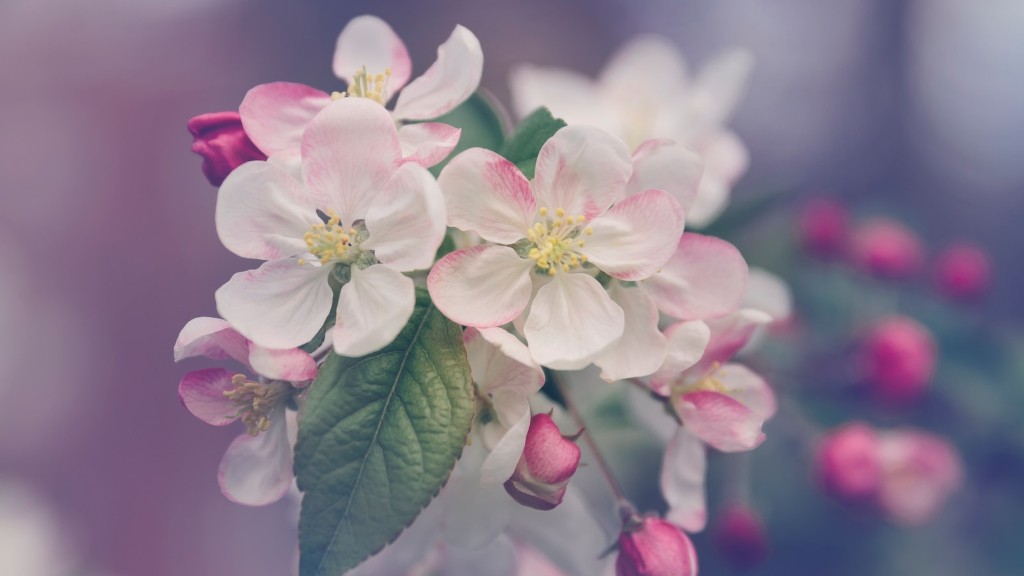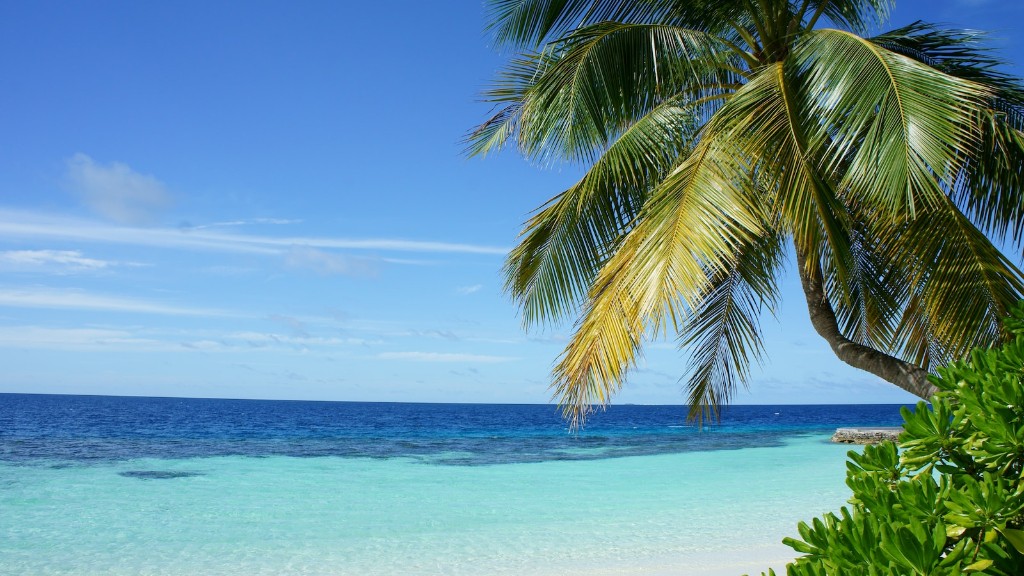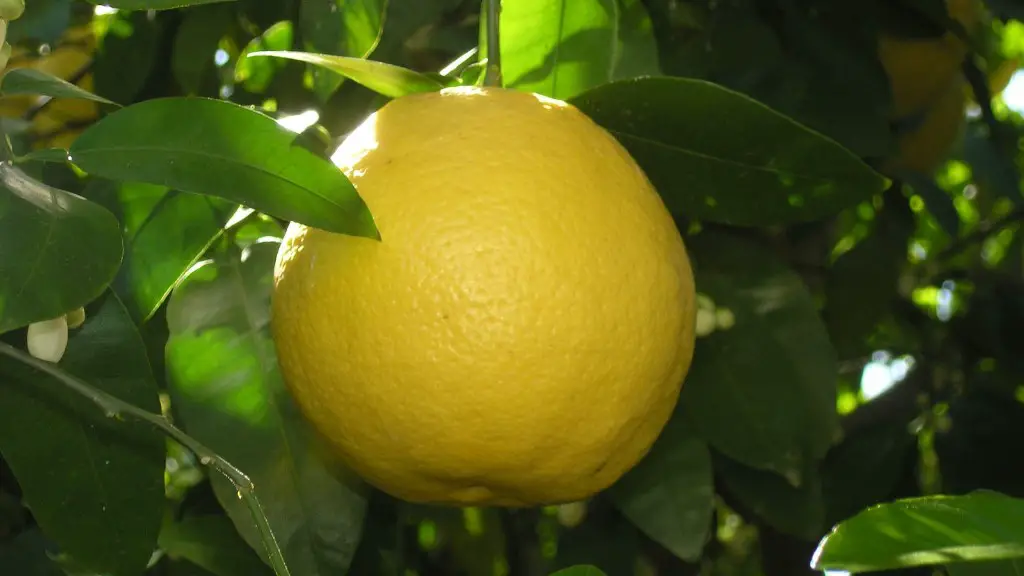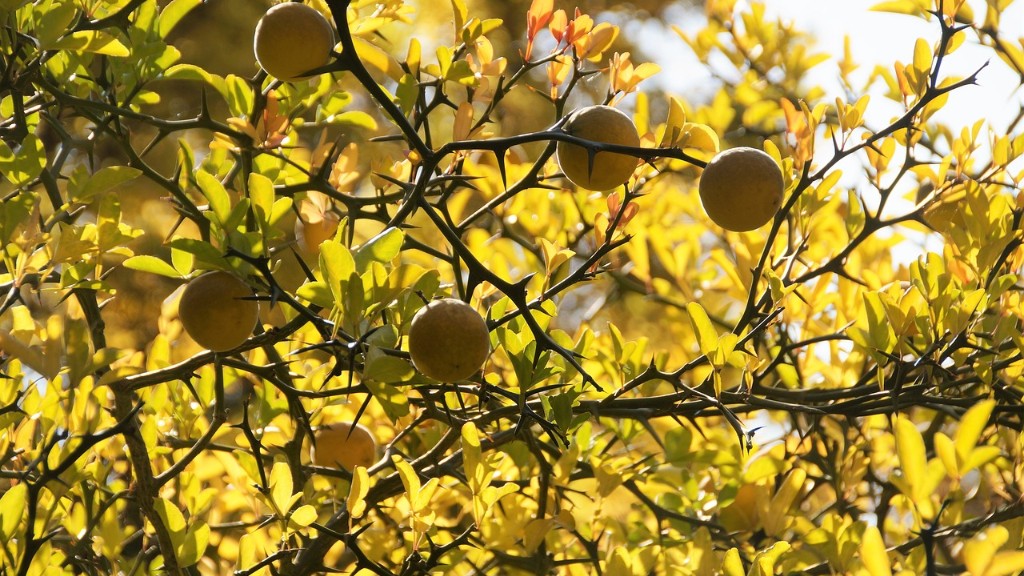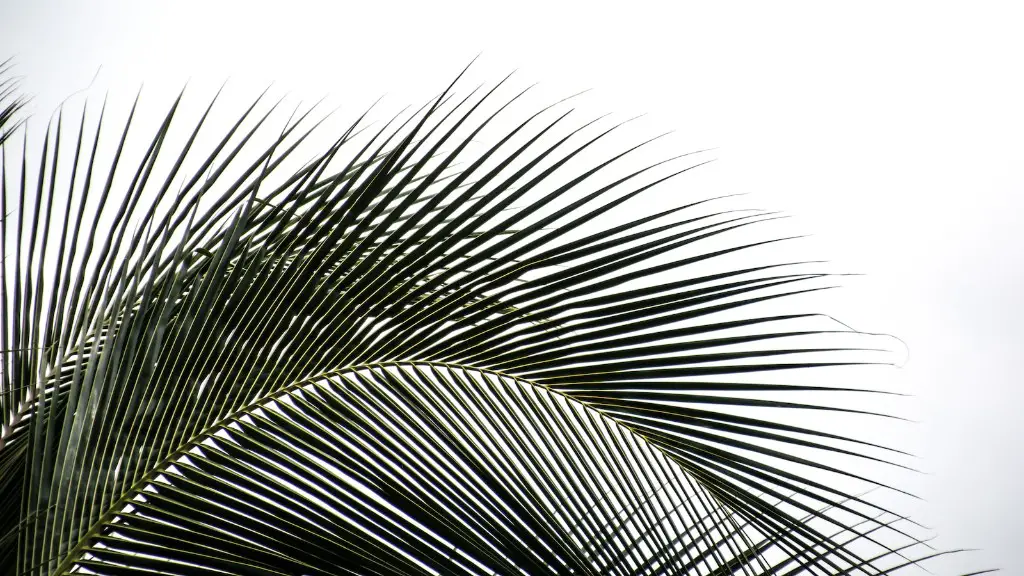Crab apple trees are deciduous trees that belong to the Malus genus. They are hardy and adaptable, making them suitable for most climates. Crab apples are an attractive tree with a spreading canopy. They are often kept in small gardens and at the sides of roads. Crab apples are known for their small, tart, red fruit which are appreciated by humans and wildlife alike. But what makes a crab apple tree, a crab apple tree?
For a plant to be recognized as a true crab apple species, it needs to fulfill certain criteria. Firstly, it should bear small fruit (less than 2.5 cm in diameter) that contain a high concentration of acid. The smaller fruits of a crab apple tree are due to high levels of self-incompatibility. This mean that the pollen and ovules of the same tree cannot be fertilized.
In terms of structure, crab apple trees can grow to a height of 15 meters and are characterized by a wide, open and often drooping canopy. The bark of these trees is reddish-grey, forming deep furrows with age. Their leaves are oval in shape, with serrated margins. They are normally light green in color, darkening as autumn approaches. In spring, white, pink or red blossoms form on the tree’s branches and these produce the tart fruits.
Crab apples produce a lot of pollen, so they are often kept far away from hay fever sufferers. Their flowers are also especially attractive to bees, which helps to enhance pollination in nearby plants. For this reason, crab apples are also known as ‘nectar-producing trees’. And the small fruits contain minerals and vitamins, such as calcium, potassium, magnesium, sodium and vitamin C.
In addition to their practical uses, crab apples are often appreciated as ornamental trees. For example, they are often featured in bonsai displays. When properly pruned, these trees can be grown almost in any space without taking up too much room. Crab apples also look impressive in all four seasons, adding beauty and interest to any landscape.
Uses of Crab Apple Trees
Crab apple trees can be used for many purposes. Their flowers provide nectar for bees, their foliage provides food for caterpillars, and their tart fruit can be used for making jam, jelly, or in cooking. Additionally, their dense foliage is perfect for providing dense shade and shielding from the wind.
The crab apple tree is also attractive to other wildlife, Such as birds which like to perch in its branches and feed on the fruit. In fact, some bird species have evolved specifically to eat crab apples. For example, the red-breasted nuthatch of North America will peck at the fruit of the trees and drop them for easier access.
In addition, the wood of the crab apple trees can be used in construction and furniture. The versatile timber is strong, lightweight and easy to work making it popular for carving and other crafts. The bark of the trees can also be used in herbal remedies, to treat numerous ailments such as headaches, nausea, diarrhoea and fever.
Finally, medicinal and food use of crab apple trees can be beneficial to humans. For example, the bark of these trees has been used in traditional medicine for centuries. The leaves and flowers can also be used to make medicinal teas, while the fruits are widely used in culinary applications such as cooked sauces, jellies, wines and ciders.
Benefits of Crab Apple Trees
Crab apple trees offer numerous benefits to landowners. Not only do they bring beauty to a property but they also provide protection from wind and sun. The dense canopy of leaves shade gardens and buildings, reducing the need for energy-consuming air-conditioning.
In addition, their small fruits can be used to make homemade jellies, jams or cider. In rural areas, the trees are often used to attract birds and other wildlife, providing a source of food, nesting sites and natural entertainment for hours. The trees are also an important source of nectar for beekeepers.
Moreover, crab apple trees are hardy and tolerant of a wide range of soil types, making them suitable for most climates. Furthermore, Crab apples are low maintenance, needing minimal pruning and are especially resistant to pests, diseases and drought.
The crab apple tree is also appreciated by property owners and landscape designers for its attractive pink and white blossom, which adds beauty and seasonal interest to the landscape. Its coloured fruits can also be used as a colourful display in flower beds or along pathways. Finally, the wood can be used in carving, furniture and construction and the bark has medicinal qualities.
Pests of Crab Apple Trees
Despite their hardiness and disease resistance, Crab apple trees can be susceptible to certain pests and diseases, most notably apple scab and cedar-apple rust. Apple scab fungus is the most common disease of crab apple trees, causing black scab-like spots to appear on the fruit and leaves. Petal blight is also a common disease in crab apple trees, causing the petals to become infected and eventually fall off the tree.
The most common insect pests such as aphids, spider mites and scale insects can also affect crab apple trees. The leaves may develop discolouration, and in some cases, the fruits may be deformed due to the insect pest infestation. The bark and twigs may also develop cracks as a result of borers.
Fungicides, insecticides and miticides can all be used to treat affected trees, but in some cases it may be necessary to remove and destroy the affected trees to prevent the spread of the disease or the pest.
In addition, animals such as deer, voles, rabbits and squirrels can also cause damage to crab apple trees, particularly when they eat the developing fruits. Fencing may be necessary to keep animals away from the trees, or a combination of repellants and protective covers may be used.
Pruning of Crab Apple Trees
Proper pruning is essential for healthy crab apple trees. Pruning should be done twice per year: one in late winter and one in late summer. In winter, the tree should be pruned to remove dead, diseased and crossing branches. Pruning in summer should centre around the removal of any shoots that have grown too large.
It is important to make sure that when pruning crab apple trees, no more than 30% of the growing foliage is removed. Additionally, the pruned material should be removed from the property or burned to prevent spreading disease.
When pruning crab apple trees, it is important to ensure that the shape and overall size of the tree is maintained. Improper pruning can cause the tree to lose its natural shape over time, leading to a misshapen and unbalanced tree.
Trained arborists should be sought out to help maintain crab apple trees, as they are knowledgeable and experienced in the proper techniques involved in pruning. Unqualified individuals should never attempt to prune mature trees, as this can cause permanent damage.
Planting of Crab Apple Trees
When planting crab apple trees, it is important to ensure that they get the correct amount of sunlight, water and nutrients. The tree should be planted in a sunny spot in well-drained soil, and the base of the tree should be buried at least 2.5 cm below the surface of the soil.
The area around the tree should be cleared of weeds, stones and debris before planting. A sheet of mulch can then be laid around the base of the tree to conserve moisture and prevent weed growth. The tree should be watered regularly during the growing season to ensure healthy growth.
In terms of fertilization, it is best to use a slow-release fertilizer that is designed specifically for apple trees. This should be applied three times a year, in spring, summer and autumn. The tree should also be pruned regularly to remove dead, diseased and crossing branches and to promote healthy foliage.
Finally, when planting a crab apple tree, it is important to give it enough space to grow into its natural shape without causing overcrowding. The tree should be planted a minimum of 5 meters away from other trees or buildings, to ensure that the tree’s branches have enough room to expand.

